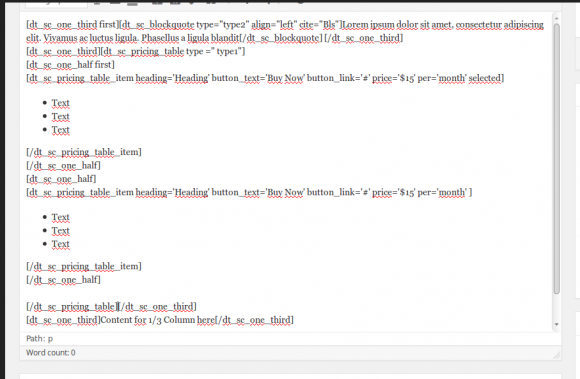
Themes, themes, themes
There is a lot to say about WordPress themes. For beginners it seems quite simple. Take one, install and be happy forever. More experienced users know that finding the right theme in the jungle of the internet is quite an undertaking. Especially if you or your client has specific wishes. The quality between themes also tends to vary a lot and not in the long term your ‘perfect’ theme might become a burden. In this article a few general guidelines what you should check before going with a theme.
Custom made vs Downloading
If you want full control over your new site, custom building you own theme from scratch is the best way to go. It’s also enormously time consuming. It’s a good option if you have the time or you have very specific and unique wishes no theme can possibly satisfy.
Still, starting with a white sheet is difficult. I would recommend finding a very minimalistic theme or one of the standard WordPress theme and make a child theme from it. This way you can replace the parent theme step-by-step until you have your own fully developed theme, without having to go through a series of creative crises. It’s easier to spot something you want to change, than starting at something that is not there after all.
Free vs Paid themes
While there are many sites offering free WordPress themes there is definitely a question of quality here. If you work with clients professionally personally I would not advice to seek one of them. Problem occurring often with free themes:
- Sloppy coding both on templates and CSS
- Hardcoded texts and titles, bad internationalization (translation) support
- Bad use of functions.php, making it not possible to override functionality in a child theme
While paid ( or ‘premium’ – blegh ) are not the holy grail, one can expect that on a reputable theme market they are of higher quality and come with more features. More importantly though, they should be more clean and thus easier to modify. So far I haven’t come across a single project where modification were not needed, so if you are working on for a client, consider what is cheaper; buying a theme or spending many frustrating hours digging through bad code.
Box-sizing and Responsive design
One simple check is how a theme behaves on mobile devices. Usually it’s a lot of extra work to make something work 100% on all those pesky mobiles with weird resolutions.
You may expect in these times for a theme to be 100% responsive ( my prediction though in a few years you go responsive for laptop screen only seeing rise of resolution on handhelds ). This is one of the few things you can actually test on the ‘live preview’ before going for a theme.
The other thing is the use ‘Border box’ box sizing, which every site should use, period. Read this article why.
Features, shortcodes and extra’s
Don’t be blinded by the marketing and the tendency to package as much extra’s as humanly possible. Make a list of requirements and stick with it. It’s easy to turn a website into a flashy carnival, it’s much harder to make it look great and keep visitors interested.

Shortcode hell
Same goes with shortcodes. They can be handy and powerful to dynamically insert features into a post whereever needed, but for your client’s sake: a shortcode shouldn’t look like much more than this : [shortcode a=b]bla[/shortcode]. A lot of WordPress themes come with a million of them. Eliminate as much as possible, ‘shortcoding’ basic functionality is a no-no.
Other things I absolutely hate and which I see in both free and paid WordPress themes are ‘breadcrumbs’ functionality defined in functions.php with no option to change them in a child theme ( or worse, menu functionality and sorting ), printing of CSS styles inside the body for custom CSS. They all require you to edit the parent theme and thus possibly break on updates.
Stick with a theme
Once you found a good theme and used it in a project to your satisfaction consider building up a small catalogue of themes suitable for any situation. Every theme is built differently and comes with different ( often third-party ) features. Having to dig in every time to figure out theme specifics can be quite time-consuming. Once you have a theme that’s versatile and well-built it might be easier just to customize a little extra on that one then having to restart anew with a different theme.
There is a lot more to say on WordPress themes, depending on your individual experience. What do you recommend when looking for a theme? How are you experiences, the good and bad?
Tags: themes, WordPress themes
'float:left')); ?>
